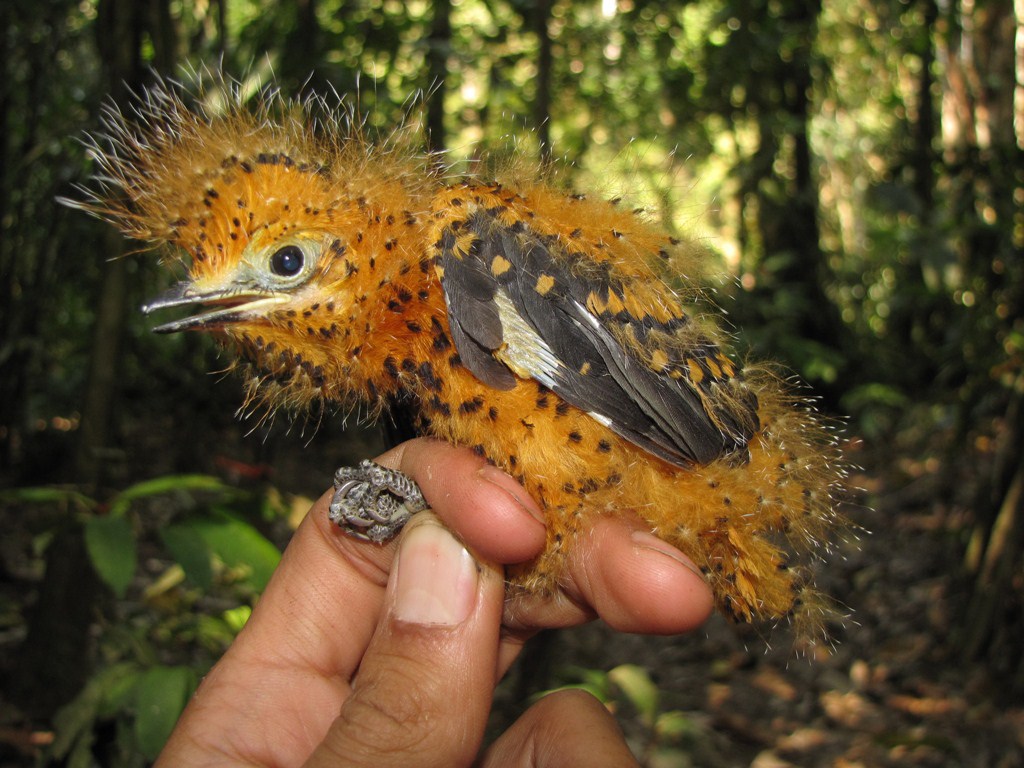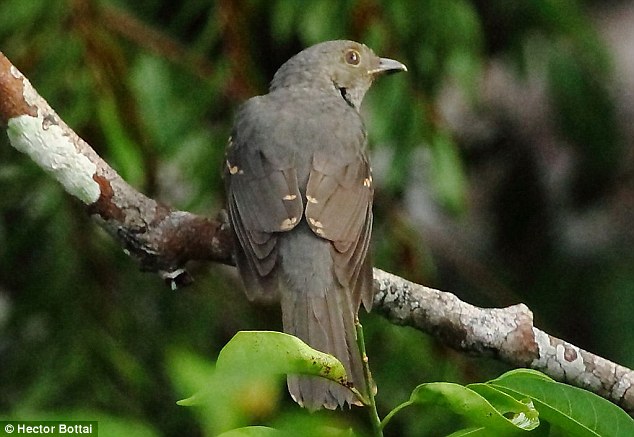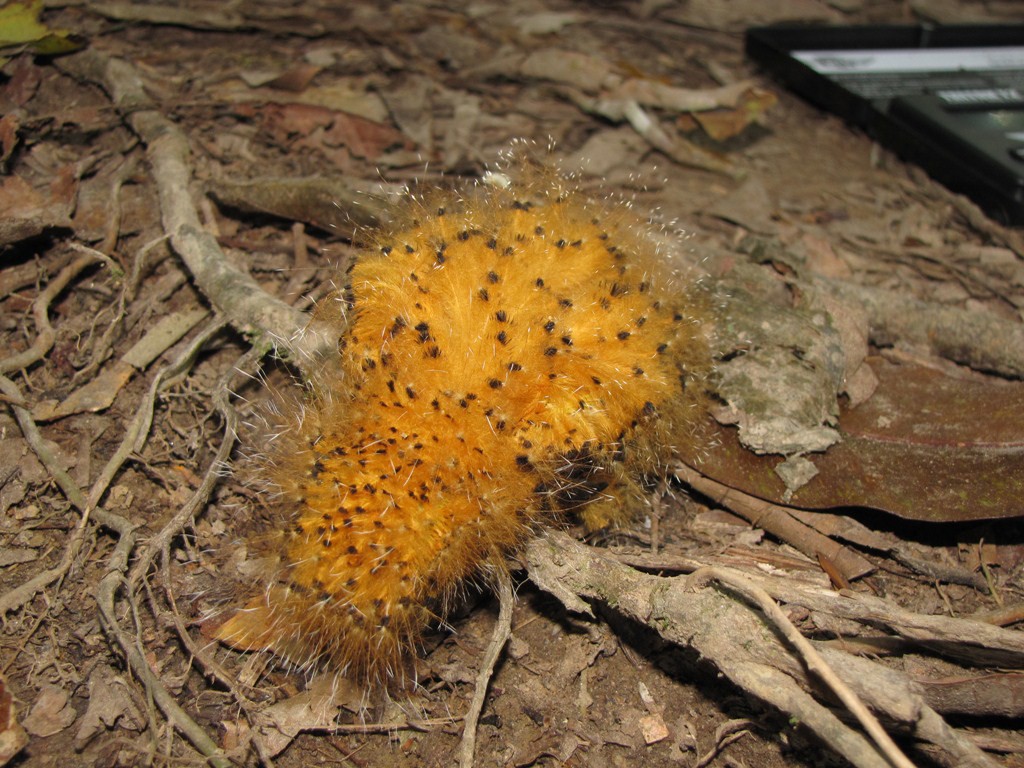
The bird that pretends to be a CATERPILLAR
- Chicks mimic toxic hairy moth larvae to scare off predators
- Chicks of the Cinereous Mourner bird have bright orange spiky feathers
- They move their heads from side to side like caterpillars when disturbed
- Adult birds develop a boring grey colour with brown spots as they mature
- Scientists believe their appearance helps to keep them safe from predators
- It is one of the few cases in nature of a bird pretending to be a toxic insect
- Researchers at the University of California studied the birds in the Amazon
By Richard Gray for MailOnline
At first glance it might look like a large, hairy caterpillar, but this mass of orange fluff is in fact the chick of a small bird that lives in the Amazon.
Biologists have found that the young of dull grey bird called the Cinereous Mourner have evolved an unusual tactic to avoid being eaten by predators.
Rather than relying upon their parents, which measure around seven inches (20cm) in length, to protect them, the chicks mimic poisonous caterpillars.
On hatching, the chicks are covered with a distinctive mass of bright orange and strangely shaped, spiky feathers. This gives the chicks the appearance of a large and hairy caterpillar that use bright colours to warn predators that they are toxic.
To add to the effect, however, the researchers found that the chicks begin to move in strange ways after a few days, writhing their heads much like a caterpillar.
Dr Gustavo Londoño, a biologist at the University of California who led the study, said: ‘These traits gave it a resemblance to a hairy, aposematic caterpillar.
‘Because predation is the main cause of avian nest failure, selection should favor strategies that reduce the probablity of nest predation.’
Dr Londoño and his colleagues, whose results are published in the journal The American Naturalist, suggest that the Cinereous Mourner, also called Laniocera hypopyrra, have evolved this strategy for keeping their young safe due to the relatively long period they spend raising them. The chicks spend around 20 days in the nest before they are mature enough to leave – considered to be a long time for a bird of their size. The chicks spend around 20 days in the nest before they are mature enough to leave – considered to be a long time for a bird of their size. This may be because the adults only feed the chicks once every hour, meaning the chicks move relatively slow.
Using pictures and video footage of the chicks in the nest, Dr Londoño and his colleagues were able to watch their behaviour while in the nest. They found that the chicks moved their heads from side to side when the nest was disturbed. After 14 days the chicks were around 5.5 inches (14cm) long. The chicks resembled the caterpillars of a flannel moth, which are often toxic, and measure up to 4.7 inches (12cm). They also found that the Cinereous Mourner chicks did not beg for food when the parent arrived at the nest like chicks of other species.

Adult Cinereous Mourner birds, like the one above, grow to around seven inches and have a drab grey colour

A Cinereous Mourner chicks, above, move their heads from side to side when disturbed like a caterpillar
The researchers said that this could be because the chick does not know that the arriving bird is their parent or a predator.
They claim this may help to put off potential predators such as other birds and snakes.
First described by the French naturalist Louis Jean Pierre Vieillot in 1817, the Cinereous Mourner is suffering declines and is believed to be vulnerable.
An estimated 10,000 mature adults live in the lowland rain forests of Bolivia, Brazil, Colombia, Ecuador, French Guiana, Guyana, Peru, Suriname, and Venezuela.
Dr Londoño said: ‘The caterpillar we encountered measured 12 cm, which closely matches the size of the L. hypopyrra nestling.
‘The striking morphological similarity is the caterpillar’s orange ‘hairs’ with white tips, which match almost exactly the nestling’s elongated orange downy feather barbs with bright white tips.
‘The morphological appearance of an aposematic caterpillar was reinforced by behaviour – the caterpillar-like head movements of nestlings when disturbed closely resembles the movements of the aposematic caterpillar.’